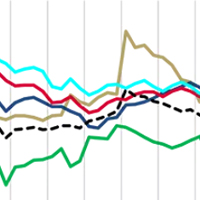The FDIC is a preeminent banking research institution. The FDIC established the Center for Financial Research to promote research on topics important to the FDIC's mission including deposit insurance, bank supervision, making large and complex financial institutions resolvable, and resolution of failed financial institutions. The Center has an active seminar series and maintains contacts with prominent scholars in the industry, academics, and the public sector. Its research follows banking industry developments, risk measurement and management methods, regulatory policy, and related topics. The Center sponsors an annual Bank Research Conference and hosts visiting scholars. The work of our researchers helps the FDIC maintain a safe, sound, and vibrant banking sector.
The Center includes a team of highly-qualified economists, researchers, and data scientists, who conduct and publish empirical and theoretical research on the banking industry, bank regulation, and deposit insurance. They also develop statistical and financial models to support FDIC operations. The Center is also supported by advisors, scholars, and fellows who advise senior management and coauthor research papers with economists.
Papers, Studies, and Survey Reports
The Center publishes working papers, staff studies, survey reports, and other analyses to prompt discussion among the FDIC's many stakeholders to expand knowledge and understanding of issues that affect the banking system.
Events
The Center hosts an annual Bank Research Conference and other events throughout the year to foster dialogue among banking regulators and supervisors, academics, and the private sector.
Who We Are
The Center includes a team of highly qualified economists and researchers, who conduct and publish empirical and theoretical research on the banking industry, bank regulation, and deposit insurance. They also develop statistical and financial models to support FDIC operations. The Center is also supported by advisors, scholars, and fellows who advise senior management and coauthor research papers with economists.
Career opportunities are available for interns, fellowships, and economists.
Contact
For additional information about the FDIC Center for Financial Research, please contact us.
Have a Paper You Want to Present at the FDIC?
The FDIC offers a seminar series to present interesting and informative papers. If you would like to present a paper, please e-mail your paper and available presentation dates to contact us.
CFR News

Summer Scholars Program: Deadline to apply for the Summer Scholars program will be in mid-February.


